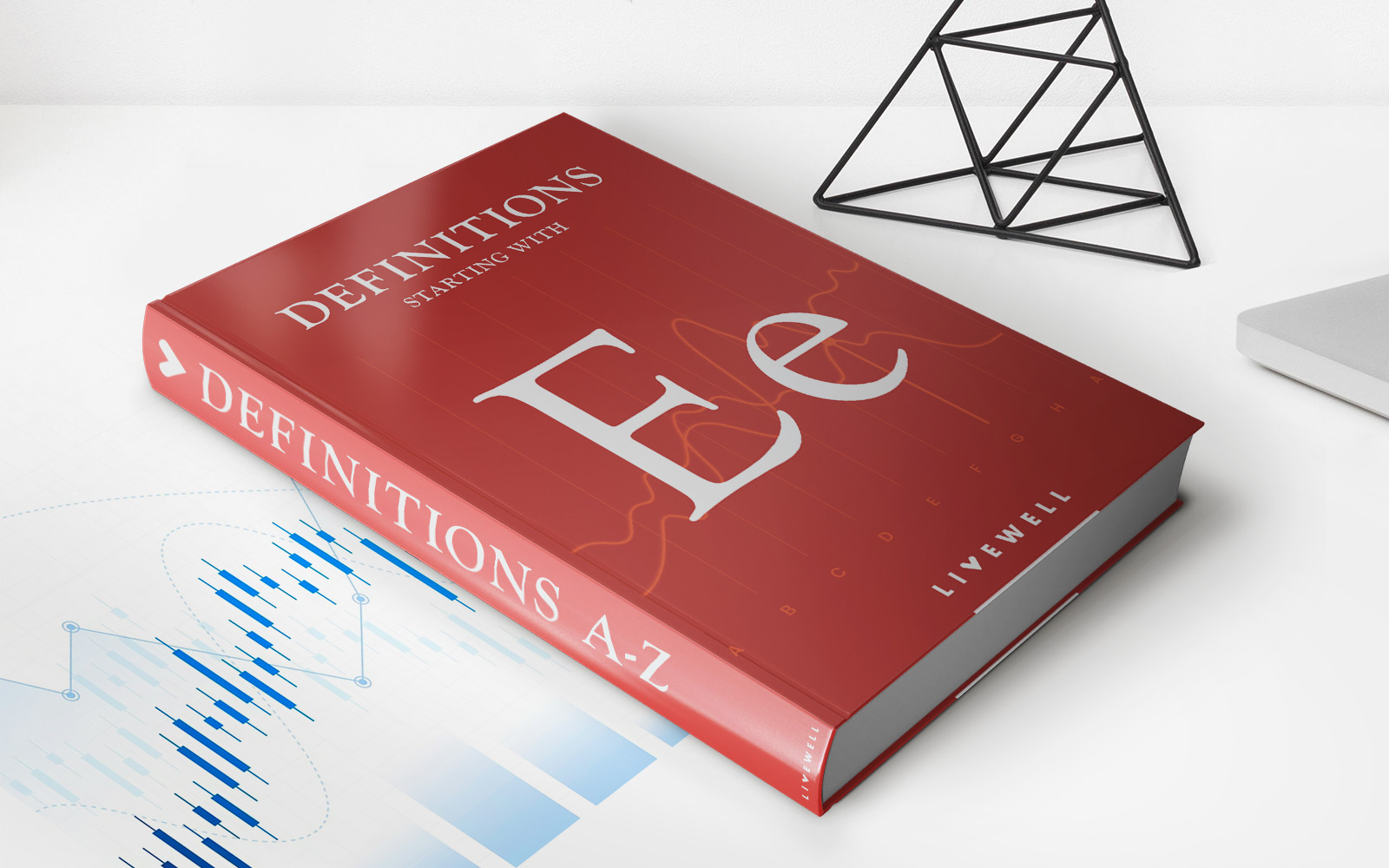

Finance
How Much Is ASU Per Credit Hour
Published: January 10, 2024
Learn about the cost of attending ASU per credit hour and explore financial options in this comprehensive guide to financing your education in the field of finance.
(Many of the links in this article redirect to a specific reviewed product. Your purchase of these products through affiliate links helps to generate commission for LiveWell, at no extra cost. Learn more)
Table of Contents
Introduction
When considering the pursuit of higher education, one of the most important factors to consider is the cost. With tuition fees, additional expenses, and the rising cost of living, it’s crucial to have a clear understanding of how much it will cost to attend a university or college.
In this article, we’ll dive deep into the cost of education, specifically focusing on the Arizona State University (ASU) per credit hour. ASU is known for its high-quality education and diverse range of programs, attracting students from all over the world.
While the cost of higher education can be a significant investment, it’s important to remember that it is an investment in your future. By understanding the costs involved, you can better plan your finances, explore scholarship opportunities, and make informed decisions about how to fund your education.
In the following sections, we’ll explore the factors that affect the cost per credit hour at ASU, including in-state and out-of-state tuition rates, financial aid options, and additional fees and expenses. We’ll also compare the cost of education at ASU with other universities, providing you with a comprehensive view of the expenses involved.
Whether you’re a prospective student considering ASU or just interested in understanding the cost of education, this article aims to provide you with the information you need to make an informed decision. So, let’s dive into the details and understand how much ASU charges per credit hour and what factors contribute to this cost.
Understanding the Cost of Education
Before we delve into the specifics of ASU’s per credit hour cost, it’s essential to understand the factors that contribute to the overall cost of education. Higher education expenses encompass more than just tuition fees.
Tuition: Tuition fees form the primary component of the overall cost. They cover the cost of instruction, access to academic resources, and faculty support. Tuition fees can vary significantly depending on factors such as the type of institution, program of study, and residency status.
Housing and Living Expenses: Students must also consider housing costs, including on-campus or off-campus accommodations, utilities, groceries, transportation, and personal expenses. These expenses can differ based on the location and lifestyle choices of the student.
Books and Supplies: Textbooks, course materials, and supplies are necessary for academic success. Students may need to budget for these additional expenses, which can vary depending on the program and courses they are enrolled in.
Additional Fees: Many universities charge additional fees, such as technology fees, lab fees, recreation fees, and health services fees. These fees are often charged on a per-semester or per-credit basis and can add to the overall cost of education.
Understanding these cost components allows students to plan their finances effectively and make informed decisions. It is recommended to create a comprehensive budget that includes tuition, housing, living expenses, books, supplies, and additional fees to understand the full picture of the cost of education.
Now that we have a general understanding of the various expenses involved, let’s focus on ASU’s per credit hour cost and what factors contribute to it.
Tuition at Arizona State University
Arizona State University (ASU) is a renowned institution known for its quality education and diverse academic programs. ASU offers a wide range of undergraduate and graduate programs across various disciplines, making it an attractive choice for students seeking a well-rounded education.
When it comes to tuition, ASU employs a tiered tuition structure based on the number of credit hours taken by a student. In-state students typically pay a lower tuition rate compared to out-of-state students. It’s important to note that tuition rates are subject to change and can vary slightly each academic year.
For in-state undergraduate students at ASU, the per credit hour tuition rate for the 2021-2022 academic year is approximately $684. This means that for a typical full-time undergraduate load of 15 credit hours per semester, the tuition cost would be around $10,260 per semester.
Out-of-state undergraduate students, however, have a higher per credit hour tuition rate. For the 2021-2022 academic year, the out-of-state undergraduate tuition rate at ASU is approximately $1,130 per credit hour. This translates to a full-time undergraduate load costing around $16,950 per semester for out-of-state students.
For graduate students at ASU, the per credit hour tuition rate varies depending on the specific program. Some graduate programs have lower tuition rates, while others may have higher rates due to the specialized nature of the coursework and resources required.
It’s important to consider that tuition rates can be subject to additional fees, including technology fees, lab fees, and other miscellaneous charges. These fees can vary depending on the program of study and enrollment status, so it’s crucial to be aware of them when calculating the overall cost of education at ASU.
ASU also offers a tuition payment plan that allows students to pay their tuition and fees in installments throughout the semester, providing flexibility and easing the financial burden.
Now that we have a better understanding of the tuition rates at ASU, let’s explore the factors that can affect the per credit hour cost.
Factors Affecting the Cost per Credit Hour
Several factors contribute to the cost per credit hour at Arizona State University (ASU). Understanding these factors can help students plan their finances effectively and make informed decisions about their education.
Residency Status: ASU offers different tuition rates for in-state and out-of-state students. In-state students typically pay a lower tuition rate compared to out-of-state students. Residency requirements vary by state and are determined by factors such as the length of residency, intent to remain in the state, and financial independence.
Program of Study: The cost per credit hour can also vary depending on the program of study. Some programs, such as engineering or healthcare-related fields, may have higher tuition rates due to the specialized nature of the coursework and the need for additional resources.
Level of Study: Undergraduate and graduate tuition rates can differ at ASU. Generally, graduate programs have higher tuition rates compared to undergraduate programs, reflecting the advanced level of education and specialization they offer.
Course Load: The number of credit hours taken in a semester can affect the per credit hour cost. Full-time students typically pay a flat tuition rate for a specific number of credit hours, while part-time students may pay on a per-credit basis. It’s important to consider the number of credit hours needed to fulfill degree requirements and factor in the corresponding costs.
Residence Hall vs. Commuter Status: For students living on-campus in university residence halls, additional costs such as room and board will apply. These expenses can significantly impact the overall cost of education. On the other hand, students who commute to campus may save on housing expenses but should consider transportation costs when calculating their budget.
Scholarships and Financial Aid: Scholarships, grants, and financial aid can help offset the cost of education at ASU. Students are encouraged to explore and apply for any available scholarships and financial aid opportunities offered by the university, external organizations, or government programs.
Considering these factors can provide students with a clearer understanding of the cost per credit hour at ASU. It’s recommended to consult with the university’s financial aid office and review the latest tuition information to get the most accurate estimate of expenses.
In the next section, we will explore the difference between in-state and out-of-state tuition rates at ASU.
In-State vs. Out-of-State Tuition Rates
One of the significant factors influencing the cost of education is the difference between in-state and out-of-state tuition rates at Arizona State University (ASU). Residency status plays a crucial role in determining the tuition rate that students are eligible for.
In-state students are those who are residents of the state in which ASU is located, typically Arizona. In-state tuition rates at ASU are generally lower compared to out-of-state tuition rates. These lower rates are a result of state funding and support provided to public universities like ASU.
On the other hand, out-of-state students are residents of a state other than Arizona. Out-of-state tuition rates are higher to compensate for the lack of state funding and the additional resources needed to accommodate students from outside the state.
The difference between in-state and out-of-state tuition rates can be significant. For example, as mentioned in the previous section, in-state undergraduate students at ASU can expect to pay around $684 per credit hour for the 2021-2022 academic year, while out-of-state undergraduate students are charged approximately $1,130 per credit hour.
It’s important to note that certain circumstances can allow out-of-state students to qualify for in-state tuition rates. These circumstances may include establishing residency in Arizona, having a parent or legal guardian who is an Arizona resident, or meeting specific criteria outlined by ASU’s residency requirements.
Students interested in qualifying for in-state tuition rates should familiarize themselves with ASU’s residency requirements and consult with the university’s admissions or residency office for guidance and assistance throughout the process.
It’s also worth mentioning that the difference in tuition rates applies to undergraduate and graduate programs alike. Therefore, out-of-state graduate students can expect to pay higher tuition rates compared to their in-state counterparts.
Considering the difference between in-state and out-of-state tuition rates is crucial when planning the overall cost of education at ASU. Prospective students should carefully evaluate their residency status and the financial implications associated with it to make informed decisions about their education and budgeting.
In the following sections, we’ll explore financial aid and scholarship opportunities that can help offset the cost of education at ASU.
Financial Aid and Scholarships
Paying for higher education can be a significant financial commitment, but Arizona State University (ASU) offers various financial aid options and scholarships to help ease the burden and make education more accessible to students.
Financial Aid: ASU participates in federal financial aid programs, including grants, loans, and work-study opportunities. These programs are based on the student’s financial need, as determined by completing the Free Application for Federal Student Aid (FAFSA). By submitting the FAFSA, students can be considered for federal grants, such as the Pell Grant, which does not require repayment, as well as low-interest federal loans.
In addition to federal financial aid, ASU also offers institutional aid, which includes scholarships and grants provided by the university. These funds are often awarded based on merit, academic achievement, leadership qualities, or other criteria specified by the university. Students can explore the ASU scholarships database and contact the university’s financial aid office to inquire about available opportunities and application requirements.
Scholarships: ASU provides numerous scholarships that recognize outstanding academic achievement, leadership potential, artistic talents, community service, and other notable qualities. The ASU New American University Scholarship, for example, is a highly prestigious scholarship that covers full tuition and is awarded to high-achieving students who demonstrate exceptional academic excellence.
ASU also offers numerous scholarships dedicated to specific majors, hobbies, affiliations, and diverse backgrounds. These scholarships can provide financial support for students from various backgrounds and help reduce the cost of education.
In addition to scholarships offered by ASU, students should also explore external scholarship opportunities. Many private organizations, community groups, and businesses offer scholarships to support students pursuing higher education. Websites like Fastweb and Scholarships.com can assist students in finding external scholarship opportunities that align with their interests, goals, and qualifications.
It’s essential to note that scholarship deadlines can vary, so students should actively explore and apply for scholarships well in advance to ensure they meet all requirements and submission deadlines.
By taking advantage of financial aid and scholarship opportunities, students can significantly offset the cost of education at ASU, making it more affordable and manageable.
Now, let’s explore other fees and expenses that students should consider when calculating the total cost of education at ASU.
Additional Fees and Expenses
When considering the cost of education at Arizona State University (ASU), it’s important to take into account additional fees and expenses beyond tuition. These costs can vary depending on the program of study, enrollment status, and individual circumstances. Being aware of these fees and expenses will help students create a more accurate budget and plan their finances accordingly.
Technology Fees: ASU charges technology fees to support access to digital resources, technological infrastructure, and online learning platforms. These fees may vary based on the number of credit hours enrolled, and they contribute to the maintenance and enhancement of educational technology resources available to students.
Lab Fees: Some courses, particularly those involving lab work or specialized equipment, may include additional lab fees. These fees cover the cost of materials, equipment usage, and maintenance. Lab fees can vary depending on the program and specific courses taken.
Recreation Center Fees: ASU provides top-notch recreational facilities and programs for students, offering opportunities for fitness and wellness activities. Depending on the campus and enrollment status, students may be required to pay recreation center fees to access these facilities and participate in related programs.
Health Services Fees: ASU offers a range of health and wellness services to students, including access to health clinics and counseling services. Health services fees contribute to the provision of these services and may be mandatory for enrolled students.
Books and Supplies: The cost of textbooks and supplies can be a significant expense for students. The amount spent on books and supplies can vary depending on the program of study and specific courses taken. Students are encouraged to explore cost-saving options such as buying used textbooks, renting textbooks, or utilizing open educational resources when available.
Transportation: Commuting students should consider transportation costs when calculating the overall expenses. This may include the cost of fuel or public transportation passes. Students living on campus may also incur occasional travel expenses during breaks or weekends.
Housing and Living Expenses: If students choose to live on-campus in ASU residence halls, they will have additional expenses, including room and board. Off-campus living expenses, such as rent, utilities, groceries, and personal expenses, should also be considered when creating a budget.
It’s important for students to estimate these additional fees and expenses when creating a budget for their education at ASU. By factoring in these costs, students can have a more realistic understanding of their financial obligations and make informed decisions regarding their financial resources and funding.
In the next section, we’ll compare the cost of education at ASU with other universities, providing further context to the overall expenses.
Comparisons with Other Universities
When considering the cost of education at Arizona State University (ASU), it’s helpful to compare the expenses with those of other universities. This comparison provides valuable context and allows students to evaluate the affordability and value of ASU in relation to other educational institutions.
It’s important to note that tuition rates and fees can vary significantly from one university to another, depending on factors such as location, prestige, program offerings, and resources available. However, here are some general comparisons that can give you a sense of how ASU’s costs compare to other universities:
- In-State vs. Out-of-State Rates: When looking at the cost of education, it’s crucial to consider the difference between in-state and out-of-state tuition rates. ASU’s in-state tuition rates are generally competitive compared to other public universities within Arizona. However, out-of-state tuition rates at ASU may be higher compared to certain out-of-state public universities.
- Private vs. Public Universities: In general, private universities tend to have higher tuition rates compared to public universities. ASU, being a public university, typically offers more affordable tuition rates compared to many private institutions with similar program offerings and resources.
- Location Considerations: The cost of living can vary significantly depending on the location of the university. While ASU offers a comprehensive education at a reasonable cost, students should also consider the overall cost of living in Arizona compared to other states or cities where they may be considering attending university.
- Financial Aid and Scholarship Opportunities: Investigate the types and availability of financial aid and scholarship opportunities at different universities. ASU provides numerous scholarships and financial aid options to help students offset the cost of education, and this may be a crucial factor to consider when comparing costs.
It’s important to conduct thorough research when comparing universities’ costs. Each university has its own unique offerings, resources, and financial aid options, so what may appear more affordable at first glance may not necessarily provide the same educational value.
When making these comparisons, it’s also important to consider the specific program of study and the reputation of the institution in that field. The value of an education goes beyond just the cost; the quality of education, opportunities for research or internships, faculty expertise, and alumni network should also be taken into account.
Ultimately, the decision of which university to attend should be based on a combination of several factors, including cost, program offerings, reputation, financial aid opportunities, and personal fit. Students should carefully weigh these factors and consider both the short-term and long-term implications of their decision.
With these comparisons in mind, let’s conclude our exploration of the cost of education at ASU.
Conclusion
Understanding the cost of education is crucial for students and their families as they embark on their higher education journey. In this article, we explored the cost of education at Arizona State University (ASU) in terms of per credit hour rates, additional fees and expenses, and comparisons with other universities. By examining these factors, students can make more informed decisions about their education and effectively plan their finances.
We started by highlighting the importance of understanding the overall cost of education and its implications for the future. Education is an investment, and knowing the expenses involved allows students to budget effectively and explore financial aid options and scholarships.
We then delved into ASU’s tuition rates, discussing the differences between in-state and out-of-state students. While in-state tuition rates are generally lower, out-of-state students may have higher costs due to additional fees and lack of state funding.
Furthermore, we explored the factors influencing the cost per credit hour, including residency status, program of study, level of study, and course load. These factors vary among universities and can significantly impact the overall expense of education.
Additionally, we emphasized the significance of financial aid and scholarships. ASU offers various financial aid options and scholarships, both institutionally and externally, to help students offset the cost of education. It’s essential for students to explore and utilize these resources to make education more affordable and attainable.
We also discussed additional fees and expenses, such as technology fees, lab fees, recreation center fees, health services fees, and transportation expenses. Considering these costs ensures a comprehensive understanding of the financial obligations associated with attending ASU.
Finally, we touched upon the importance of comparing the cost of education at ASU with other universities. This comparison allows students to evaluate the affordability and value of their education relative to other institutions, considering factors such as in-state vs. out-of-state rates, private vs. public universities, and location considerations.
Ultimately, the decision of pursuing education at ASU or any other university should be based on a holistic assessment, encompassing not only the cost but also the quality of education, available resources, financial aid opportunities, and personal fit.
By understanding the cost of education at ASU and considering the various factors discussed in this article, students can make informed decisions about their educational journey and take steps towards achieving their academic and career goals.














